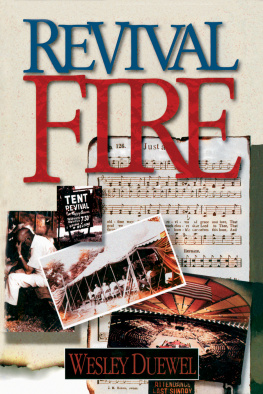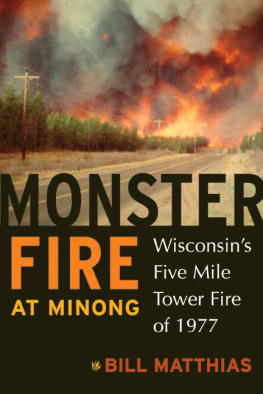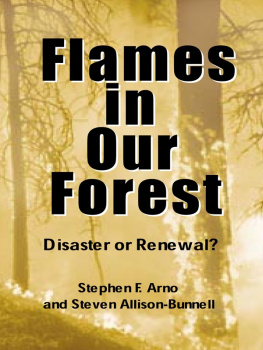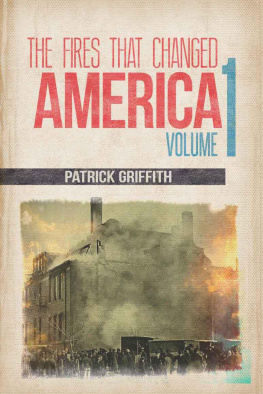About the Author
David DeKok has been reporting on the Centralia mine fire for more than thirty years. As a young journalist for the News-Item in Shamokin, Pennsylvania, from 1975 to 1987, he wrote more than five hundred stories about the plight of Centralia. His reporting led to a decision by the federal and Pennsylvania governments to relocate nearly all Centralia residents to get them away from the underground fire. The Sunday New York Times Book Review said his 1986 edition of this book, entitled Unseen Danger: A Tragedy of People, Government, and the Centralia Mine Fire, had enough bureaucratic villains to fill a Dickens novel. This updated edition, retitled Fire Underground: The Ongoing Tragedy of the Centralia Mine Fire, adds new information and continues the story to the present time. David DeKok is a native of Holland, Michigan. He lives along the Susquehanna River in Harrisburg, Pennsylvania, with his wife, Lisa Brittingham, and daughters Elizabeth and Lydia.
1: A Bad Day
S OMETHING WAS WRONG AT THE CODDINGTON HOME. AN AMBULANCE had raced up Locust Avenue and pulled in at John Coddingtons former gas station, where he and his family still had a small store and lived in the upstairs apartment. His neighbors feared the worst, knowing the Coddington home had more poison gas from the mine fire than most in Centralia.
People hurried outside and gathered in the cold near the ambulance. They could smell the sulfurous fumes venting from the tall pipe off to one side of the station. Had the carbon monoxide that crept into their homes from the fire in the old coal mines of Centralia finally claimed a life? It was an article of faith in this Pennsylvania village that neither the U.S. Department of the Interior, now headed by Secretary James G. Watt, nor their own governor Dick Thornburgh would do anything to stop the fire until it claimed a life. Such cynicism was born of too many years of watching the local, state, and federal governments vacillate over how to deal with the fire. Now it had become a raging monster that threatened to destroy their community.
The ambulance attendants emerged from the building carrying a stretcher. On it was John Coddington, the sixty-two-year-old former mayor of Centralia, followed by his wife Isabelle, and son Joe. He had five children in all, but Anne lived in Virginia, Mary a few miles away outside of Ashland, John Jr. in Harrisburg, the state capital, and Colleen was away at Penn State. Coddington had become something of a spokesman for those residents of Centralia who lived day-to-day with the very real dangers of the mine fire. Not every family in Centralia was affected by the fire, but it was a nightmare for those who were. He had been overcome by the gases but was still alive, albeit delirious. The attendants lifted the stretcher into the ambulance, closed the door, and drove away. It was March 19, 1981.
Centralia had just under a thousand residents in 1981, the year its mine fire came to national as well as international attention. It was an isolated village, straddling a high, narrow valley in the Appalachian Mountains of east-central Pennsylvania, at the southern tip of Columbia County. It was part of what is called the Anthracite Region, after the hard, shiny, high-BTU coal that is mined in that region and almost nowhere else in the United States. Philadelphia was 125 miles to the southeast of Centralia, New York City 190 miles to the east, and Pittsburgh 230 miles to the southwest. Beneath the village was a labyrinth of abandoned tunnels where miners had dug coal for over a century to fuel the boilers of industry and heat the homes of the eastern United States.
Once life in Centralia had been better, a legacy of the close social ties that result when people share a common hardship and danger like coal mining. It was never Brigadoonthere were mild tensions between the major ethnic groups in the town, especially before World War II, and crime was not unknown. But by the late 1950s, Centralia had much of the trust, innocence, and friendliness that people associate with the best of small-town life. Two events in the early 1960s laid waste to all of that. First, in the summer of 1961, came the abduction, sexual assault, and murder of thirteen-year-old Jane Benfield of Centralia by Frank Earl Senk, a traveling magazine salesman and sexual predator, of which more will be said later. The second was the mine fire, which ignited in 1962 and gradually tore Centralia apart. Like the victims of the toxic waste tragedies at Love Canal, New York, and Times Beach, Missouri, the people of Centralia learned to cope as best they could with illness and the threat of death. They faced the possible loss of home and community, of all they had worked and saved for. As a final blow, they faced official indifference and even hostility to their plight. When the people of Centralia finally rebelled, it was too late to save their community. They had no desire to leave Centralia, but by 1981 it was increasingly clear that many of them, if not all, would have to go. The events of March 19 drove home how far the situation had deteriorated after so many years of government bungling and neglect.
John Coddington was born in Centralia and went to work in the mines the evening he graduated from high school. He didnt work there very long, but it was long enough to give him a moderate amount of anthrasilicosis in his respiratory system. The disease is better known as black lung, the plague of coal miners everywhere. It would make Coddington much more susceptible to ill effects from the mine fire gases forty years later.
His first gas station was located a quarter mile south of where it would be in 1981. In the late 1950s, when the state changed the course of Route 61, the main highway through Centralia, Coddington moved his station to South Locust Avenue. It was a fateful act; beneath the new site was a mine gangway that one day would lead directly to the heart of the mine fire. The gangway would allow carbon monoxide, carbon dioxide, and oxygen-deficient atmosphere produced by the mine fire easy access to Coddingtons home and those of his neighbors through cracks in the rock and the foundations of their houses.
By 1981, daily life for the Coddingtons and several other families had assumed a horrible routine of visits by the state gas inspectors, clanging gas alarms that only seemed to sound in the middle of the night, extraordinary drowsiness, nausea and headaches caused by the gases, and anxiety. Yet they tried to maintain their lives in as ordinary a fashion as possible. To a visitor, the only sign that something was wrong might be the electronic carbon monoxide monitor, ticking softly and rhythmically, printing out a continuous paper tape, often sitting in the living room next to the television set or piano. Gas inspectors Edward Narcavage, Wayne Readly, and Jeff Stanchek, who worked for the Department of Environmental Resources, had the task of making certain that none of the residents of the mine-fire impact zonethe part of Centralia most affected by the mine firedied from the gases. That morning they arrived at the Coddington home around nine. It was the first stop on their rounds, which included fifteen houses or apartments and St. Ignatius Elementary School. In some homes they checked the air at one location, but at the Coddingtons and others they did several tests. Although the Coddington readings were not at the danger level that morningthey would have been considered extraordinary in any normal communitythe inspectors and families knew that safe gas levels could become fatal five minutes later. The gases were that unpredictable.
Chief inspector Narcavage was especially worried that day about the backfilling, three days earlier, of a deep, steaming hole across the street from the Coddingtons where a neighbor boy, Todd Domboski, twelve, had almost died on Valentines Day. The hole was caused by a subsidence, when the earth and rock above a mine chamber suddenly collapses. This can create a deep hole reaching all the way to the surface or barely ripple the ground, depending on subsurface conditions. A mine fire can trigger a subsidence by causing a mine roof to expand, then contract and crack. Narcavage feared the gases that had vented from the hole would now enter nearby homes. The subsidence had been backfilled on March 16, and a day later the Coddingtons had a serious gas incident. The monitor showed one hundred parts per million, the highest possible reading on the dial, and the tape showed the gas lingered for forty-two minutes. It was an unusually long event, particularly considering that the family had opened all the windows in the house as soon as the alarm sounded.









